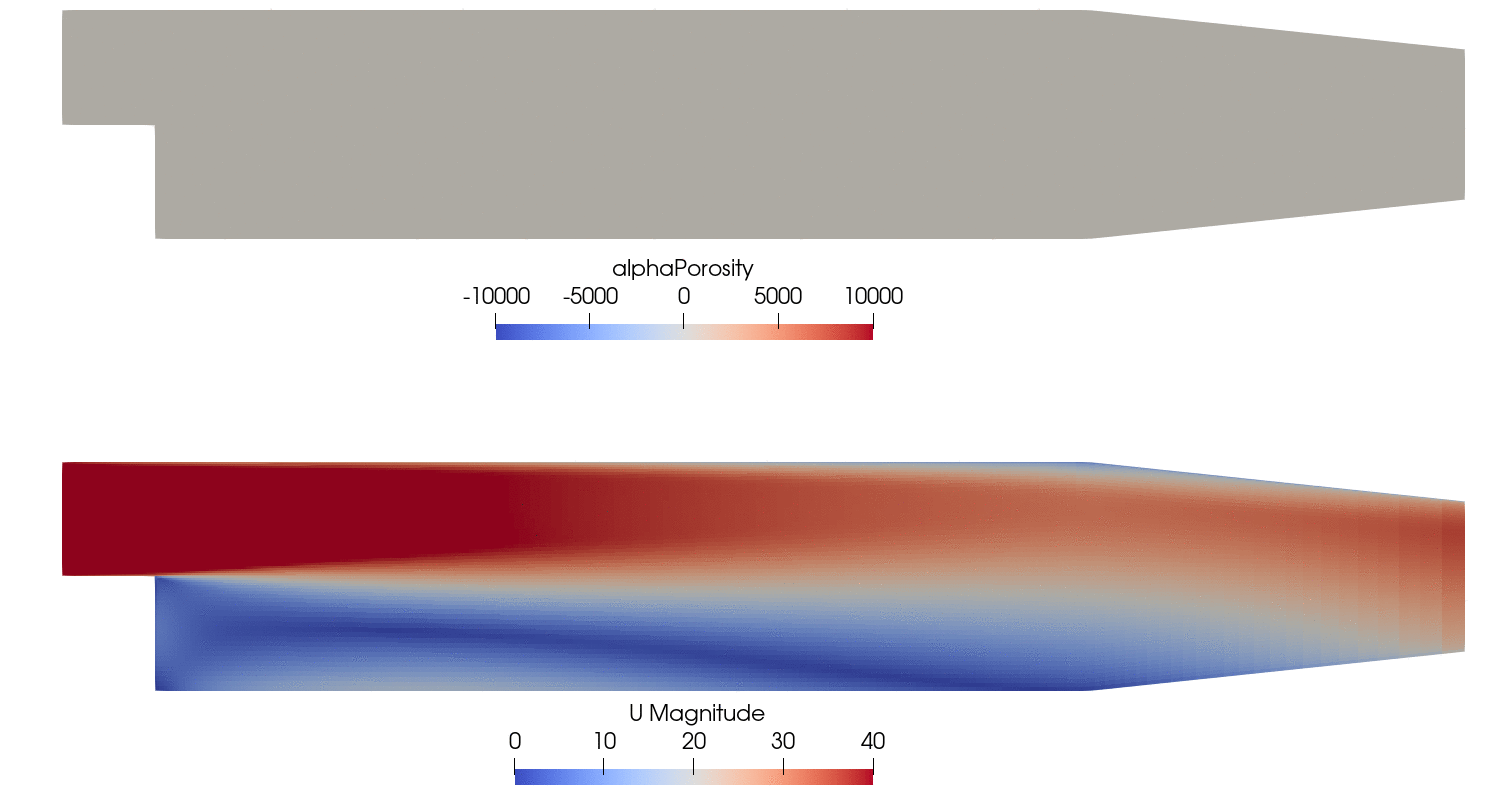The following is a density-based topology optimization case for the pitzDaily case in OpenFOAM.
Case: pitzDaily topology optimization Geometry: pitzDaily channel Objective function: Total pressure loss Design variables: 12,225 alpha porosity values in the flow field Constraints: None Mach number: 0.12 (40 m/s) Reynolds number: 0.13 million Mesh cells: ~12,225 Solver: DASimpleFoam

Fig. 1. Velocity and alpha porosity evolution during the optimization.
The “runScript.py” for a topology optimization is similar to the one used for shape optimization. In other words, we still need to specify a dummy design surface (although we will not move it)
"designSurfaces": ["upperWall"],
And we need to create a dummy FFD box to cover the dummy design surface and load it to DVGeo,
DVGeo = DVGeometry("./FFD/dummyFFD.xyz")
We also need to specify set up a dummy reference axis to make sure we can use global design variable (alpha porosity field)
DVGeo.addRefAxis("dummyAxis", xFraction=0.25, alignIndex="k")
Other notes:
-
This case only works with the SNOPT optimizer at this moment.
-
We need to specify the total number of cells “nCells”.
-
We need to choose the Jacobian free option in daOptions: “adjJacobianOption”: “JacobianFree”. This means that we need to compile the AD version of OpenFOAM and DAFoam (see here). If you use the Docker image, they have been compiled so no additional action is needed.
-
We need to properly scale the design variable because the alpha porosity field could be very large, e.g., 1e4. So we use “scale=1e-4” in DVGeo.addGeoDVVGlobal(“alphaPorosity”, …).
To run this case, first download tutorials and untar it. Then go to tutorials-main/pitzDaily and run the “preProcessing.sh” script to generate the mesh:
./preProcessing.sh
Then, use the following command to run the optimization with 4 CPU cores:
mpirun -np 4 python runScript.py 2>&1 | tee logOpt.txt
The case ran for 36 steps and took about 2 hours using Intel 3.0 GHz CPU with 4 cores. According to “logOpt.txt” and “opt_SNOPT_summary.txt”, the initial pressure loss is 0.28228 and the optimized drag is 0.16579 with a pressure-loss reduction of 41.3%.